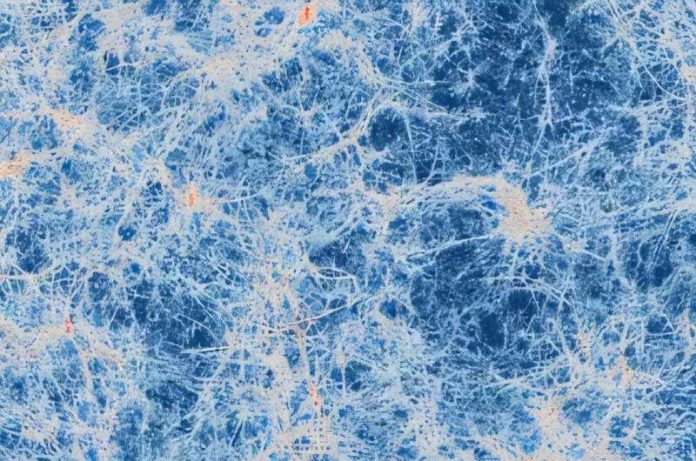
An international team of astronomers has captured the most detailed image ever of a cosmic filament, a vast structure of gas stretching between two galaxies nearly 12 billion light-years away. This filament, part of the cosmic web, provides a direct glimpse into how galaxies form and grow in the early universe.
The study, led by researchers at the University of Milano-Bicocca and the Max Planck Institute for Astrophysics (MPA), used hundreds of hours of observations with the Multi-Unit Spectroscopic Explorer (MUSE), a powerful instrument on the Very Large Telescope (VLT) in Chile.
The findings, published in Nature Astronomy, help confirm long-standing theories about how gas flows through the universe to fuel star formation.
The Cosmic Web: The Universe’s Invisible Scaffold
Modern cosmology suggests that dark matter, which makes up 85% of all matter in the universe, shapes the large-scale structure of the cosmos.
Under the influence of gravity, dark matter forms a vast cosmic web—a network of filaments that stretch across millions of light-years. At the intersections of these filaments, galaxies form and grow, pulling in gas from their surroundings.
However, detecting this intergalactic gas is extremely difficult. Most of what we know about it comes from indirect observations, where gas absorbs light from distant sources. Even hydrogen, the most common element in the universe, emits only a faint glow that has been nearly impossible to detect with previous-generation telescopes.
A Breakthrough Observation
To capture this elusive gas, the researchers undertook one of the most ambitious MUSE observation campaigns ever conducted. After hundreds of hours of data collection, they successfully imaged a 3-million-light-year-long filament, connecting two galaxies, each of which harbors an active supermassive black hole.
The ultrasensitive MUSE spectrograph allowed the team to map the faint glow of hydrogen gas within the filament, providing the first direct measurement of the boundary between gas inside galaxies and the material spread throughout the cosmic web.
“By capturing the faint light emitted by this filament, which traveled for just under 12 billion years to reach Earth, we were able to precisely characterize its shape,” said lead author Davide Tornotti, a Ph.D. student at the University of Milano-Bicocca.
Matching Theory with Observation
The team compared their results to supercomputer simulations of the universe conducted at MPA. These simulations predict how filaments should appear based on our understanding of dark matter and galaxy formation.
“When compared to the novel high-definition image of the cosmic web, we find substantial agreement between current theory and observations,” Tornotti explained. This validates existing models of how gas moves through the cosmic web and supports the idea that galaxies pull in gas from these filaments to fuel star formation.
What’s Next?
This discovery is a major milestone in understanding how galaxies grow, but astronomers are just getting started.
“We are thrilled by this direct, high-definition observation of a cosmic filament,” said MPA scientist Fabrizio Arrigoni Battaia, who was involved in the study. “But as people say in Bavaria: ‘Eine ist keine’—one doesn’t count.”
The team is now working to observe more cosmic filaments, aiming to create a comprehensive map of the gas flow in the universe. With further data, scientists hope to refine their models and uncover new insights into the hidden structure of the cosmos.
This research marks a significant step toward directly observing the fuel supply of galaxies and understanding the mechanisms that drive cosmic evolution.
The research findings can be found in Nature Astronomy.
Copyright © 2025 Knowridge Science Report. All rights reserved.



